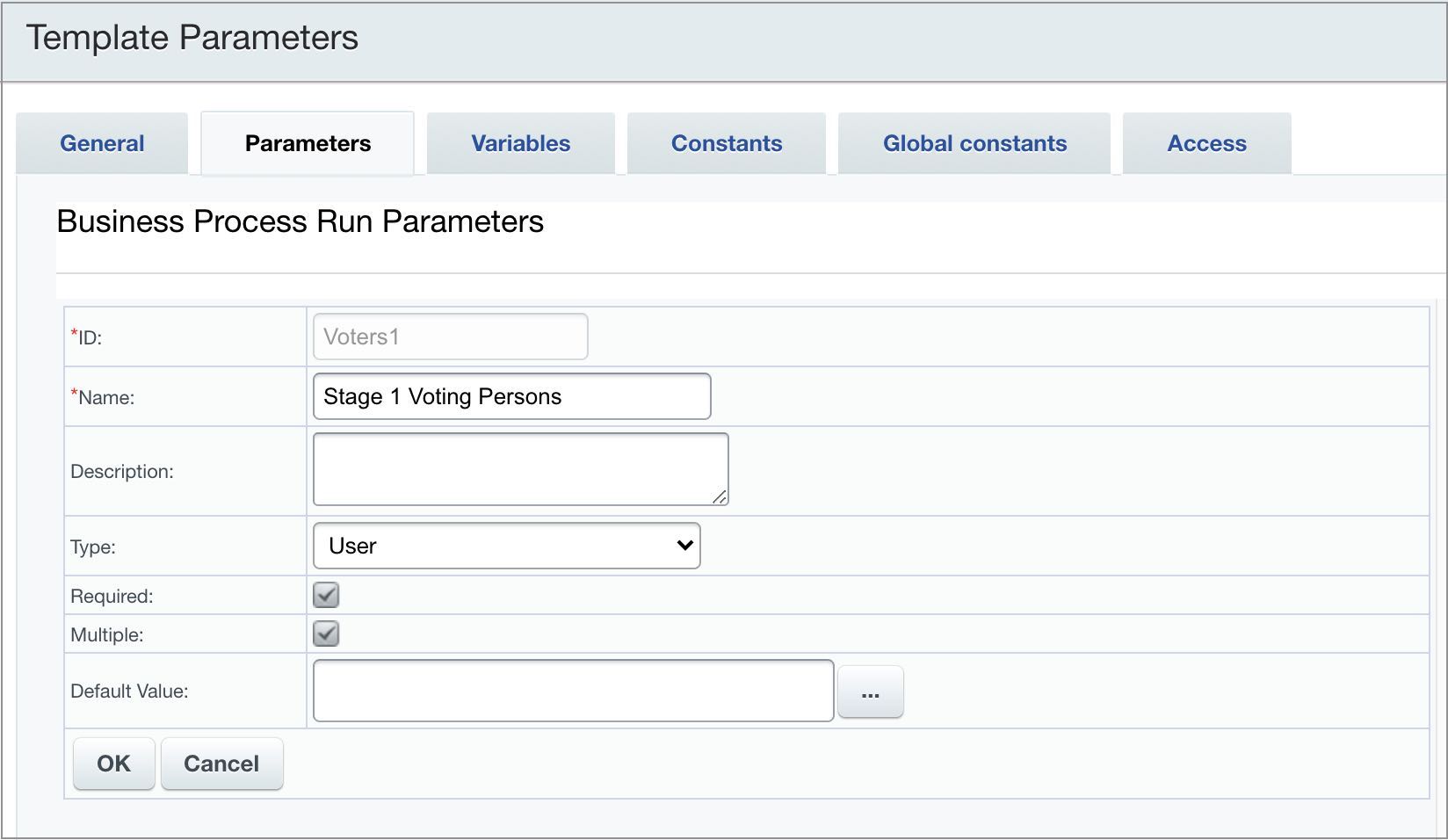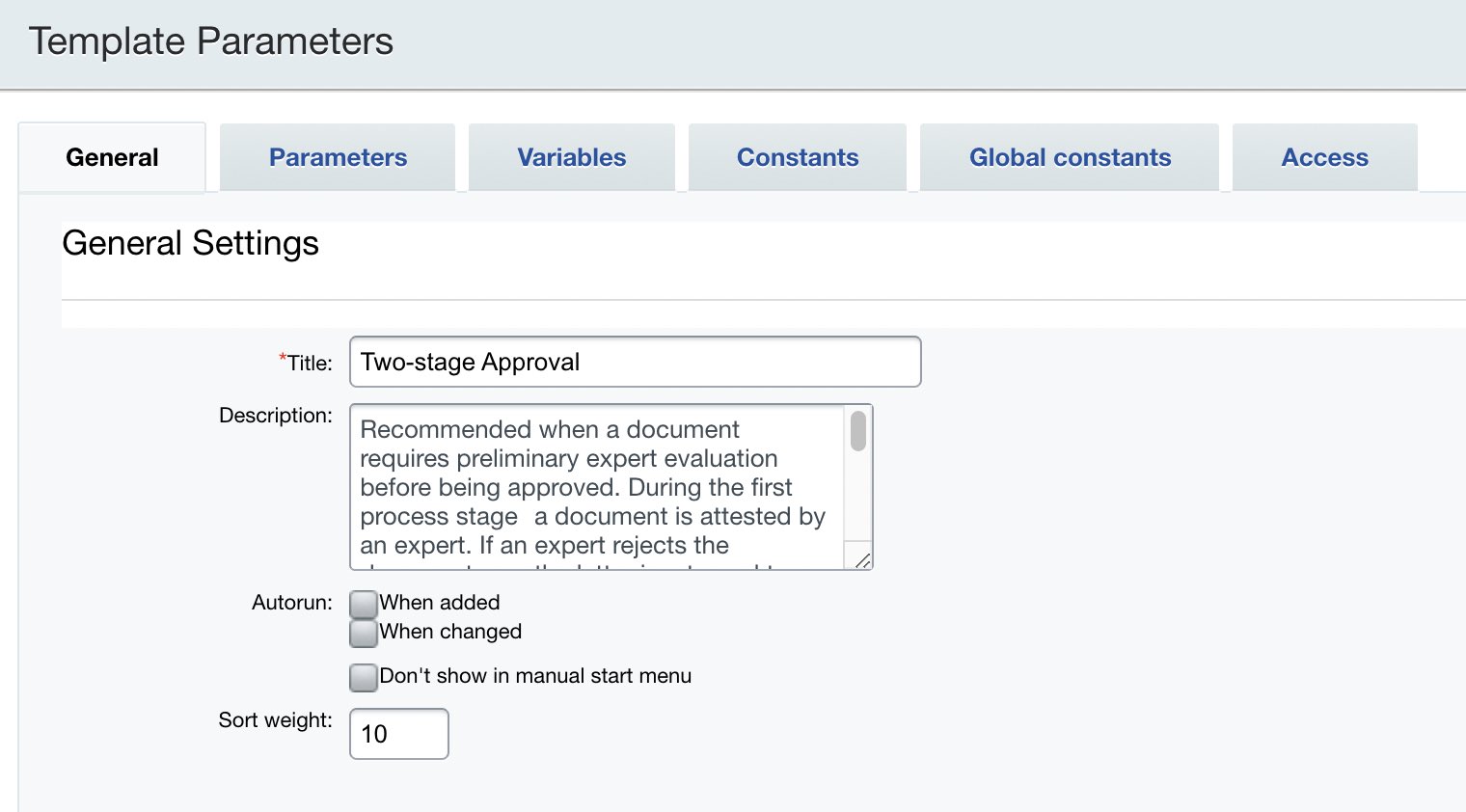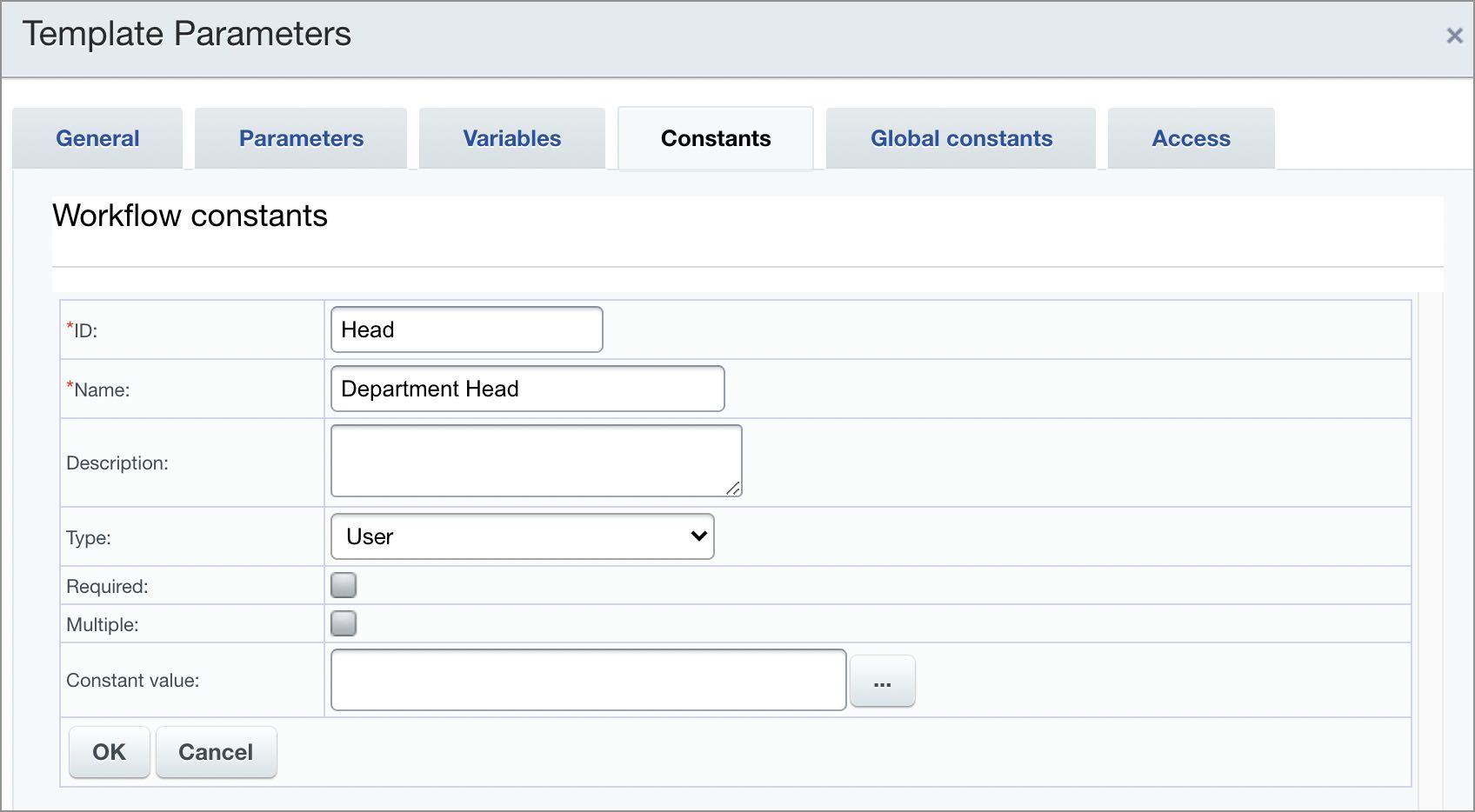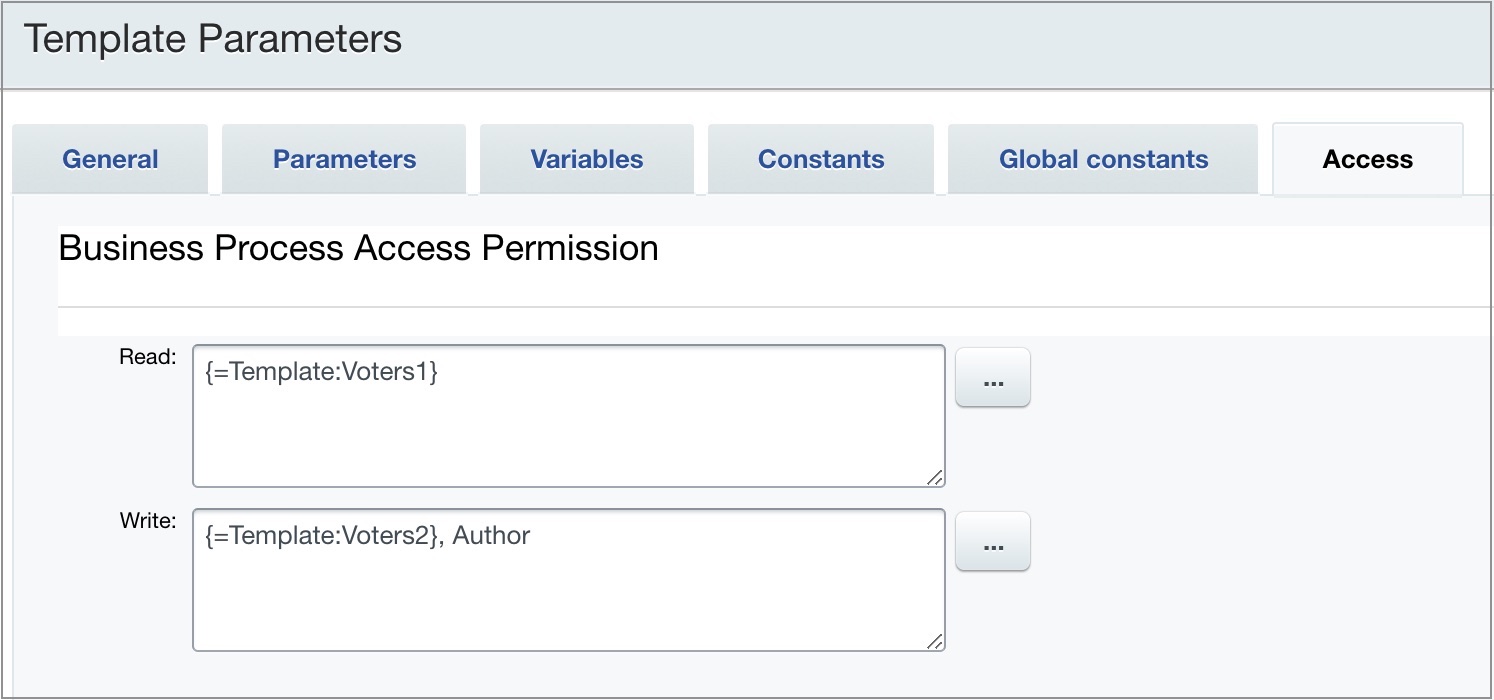Last Modified: 13.10.2021
|
|
|
Views: 4847
Last Modified: 13.10.2021 Workflow templates are used for quick and efficient workflow setup as per target objectives. Creating a template-based workflow not only updates the workflow layout, but also its individual parameters.
Workflow template is a sequence of steps (actions) from start to finish, executed in succession. Arranged in a required sequence, such steps (actions) ensure the desired result.
Creating a templateWorkflow design sequence consists of two stages:
First stage overview. Workflow template parameter setup is divided into several tabs specifying start parameters and workflow settings. BasicsThe tab General indicates the worklow title, description and automatic launch parameters. Workflow has two variants for automatic launch: when an element created and/or changed. When both flags are removed, the workflow can be launched only manually.
ParametersParameters directly indicate values in special fields before launching a workflow. To create a parameter, click on the link Add parameter in the Parameters tab and complete fields :
:
When created, the parameter is shown in
general list
Variables and constants
VariablesVariables are used for temporary data storage, required for executed process. Variable parameters are stored while workflow is in progress. Upon completion they are all erased That's why, when a user-added variable must be saved (for example: a file), use Edit option. This option saves the variable value into preliminarily created additional element field of corresponding type (e. x., file). . Constants / Global constantsConstants are needed for data storage, which cannot be modified during workflow execution. Such values are configured before running the workflow.
Constants are added via link Add constant at the corresponding tab. Opens the new constant
tab
Global constants are assigned to all workflows. Created in a similar manner to Constants. Access permission
Access tab indicates initial level of access permissions which are set for element upon launch. The access level is
specified
Specifics for access permissions assignment in the system When element uses
simplified
Simple access settings mode for iblock when Extended permission management is disabled and section User Group Permissions lists all available user groups.
(legacy) access version, they are set from external sources (access settings to iblocks/lists and etc.). The only variant is assigning access permissions externally from workflow. In this case, use Access tab or Set Permission actions to change permissions during process execution.
Courses developed by Bitrix24
|



